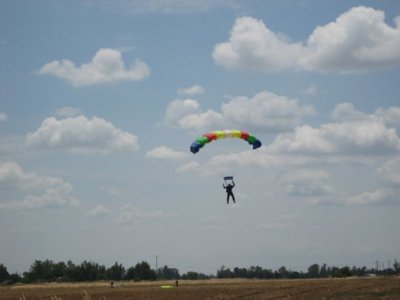-
Content
350 -
Joined
-
Last visited
Never -
Feedback
0%
Community Reputation
0 NeutralGear
-
Main Canopy Size
149
Jump Profile
-
Home DZ
Skydive San Diego
-
License
C
-
License Number
37619
-
Licensing Organization
USPA
-
Number of Jumps
310
-
Years in Sport
2
-
Don't forget about Little Rock National Airport in Arkansas. The FAA designator for the airport is LIT, making the ICAO designator...... KLIT
-
Get a job doing something else that makes a decent living, then fly for fun on your own dime. Flying will just turn into a job anyways, and you won't make enough to pay for your ramen noodles.
-
Landing a plane vs landing a parachute
bfilarsky replied to gofast_ER's topic in General Skydiving Discussions
I did it the other way around. Pilot first, skydiving second. A parachute is no more or less a wing than the metal things sticking out the sides of an airplane. So yes, the dynamics are all in the same ballpark. -
.3-.4? Not bad! I saw that in a Caravan with the -114A (725 ESHP) to 13k on a warm day with 10-12 jumpers on board - and that's time above 40 kias!
-
Haven't really flown 182's in jump operations, so no numbers from experience. But it depends on dz elevation and temperature of the day. And yes, any normally aspirated piston engine (ie, your 182) is going to lose power as it climbs. Yes, 6-8k is where it really starts to become noticeable. I'm going to guess 25-30 minute loads. Just a guess, though.
-
Mammoth Mountain, CA! I've been to a few of the resorts at Tahoe, and they have nothing on Mammoth! Amazing views and amazing terrain.
-
Stone Ruination IPA gets my vote!
-
Yes, absolutely. Depends on the stall speed, of the aircraft. 30 MPH would be enough for quite a few stol planes lightly loaded. I've been in a Cherokee in strong winds (50 knots) up at altitude (against them, unfortunately), and just for fun slowed it down as much as I could. Got a ground speed of 0 on the GPS.
-
repowering and service ceilings..
bfilarsky replied to rhys's topic in General Skydiving Discussions
Correct me if I'm wrong, Mike, but wouldn't the STC process for a new, bigger engine include testing (including dive testing) at the higher altitudes the engine is capable of? After which, you have the potential to incur new limitations not applicable to the original aircraft. -
Ditto. That's my favorite beer. Luckily, I live about 45 minutes from the Brewery, too! I was just there last night!
-
Relatively useless tidbit here - that rule only applies if the jumpers are paying for the ride. I can legally rent an airplane (as long as I pay for it, not the jumpers) and fly the jumpers as far as I want before I drop them. The reason for the rule is to close a loophole in air charter operations. The FAA wants anybody doing air charter to be under Part 135, which is much more strict than Part 91. They do not allow commercial operations to be conducted under Part 91, except for a very explicit list of activities, like skydiving, banner towing, flight instruction, crop dusting, etc. In order to close a loophole where someone could conceivably charge to fly someone from San Diego to Davis, but let them jump and hence be under part 91, they put that rule in. However, that whole section only comes in to play for commercial operations. If it is not a commercial operation (jumper isn't paying) then it is legal to drop as far as you want from takeoff.
-
Swoop Gone Wrong - The Aftermath
bfilarsky replied to skybytch's topic in Swooping and Canopy Control
Ya he sure is. Glad to hear he'll recover well. -
Swoop Gone Wrong - The Aftermath
bfilarsky replied to skybytch's topic in Swooping and Canopy Control
Any word on his condition? -
And even then, I'll echo the comments above - One pass, then turn and burn!
-
Can a wind powered vehicle travel down wind, faster than the wind?
bfilarsky replied to shropshire's topic in The Bonfire
And Belgian Draft, brush up on Frames of reference. I know it hasn't been talked about in a couple pages, but the video I posted of the cart on the treadmill IS proof that this works - the physics are exactly the same with moving ground, still air, as they are with still ground, moving air. Just like the physics of a wind tunnel are the same as the physics of flight.


